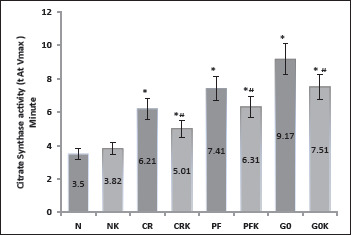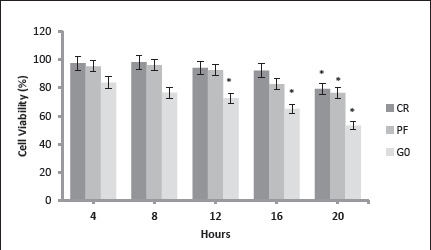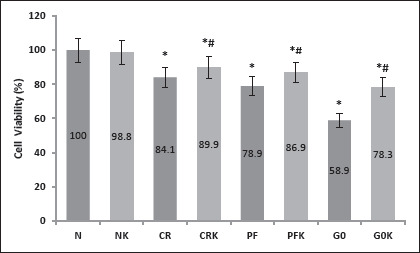Effects of Prolonged Intermittent Fasting Model on Energy Metabolism and Mitochondrial Functions in Neurons.
IF 1.8
Q4 NEUROSCIENCES
引用次数: 1
Abstract
Background: Calorie restriction (CR) during daily nutrition has been shown to affect the prognosis of many chronic diseases such as metabolic syndrome, diabetes, and aging. As an alternative nutrition model, prolonged intermittent fasting (PF) in humans is defined by the absence of food for more than 12 h. In our previous human studies, CR and PF models were compared and it was concluded that the two models might have differences in signal transduction mechanisms. We have investigated the effects of these models on neurons at the molecular level in this study. Methods: Neurons (SH-SY5Y) were incubated with normal medium (N), calorie-restricted medium (CR), fasting medium (PF), and glucose-free medium (G0) for 16 h. Simultaneously, ketone (beta-hydroxybutyrate; bOHB) was added to other experiment flasks containing the same media. Concentrations of lactate, lactate dehydrogenase (LDH), bOHB, and glucose were measured to demonstrate the changes in the energy metabolism together with the mitochondrial functions of cells. Citrate synthase activity and flow cytometric mitochondrial functions were investigated. Results: At the end of incubations, lactate and LDH levels were decreased and mitochondrial activity was increased in all ketone-added groups (P < .01) regardless of the glucose concentration in the environment. In the fasting model, these differences were more prominent. Conclusion: Our results demonstrated that neurons use ketones regardless of the amount of glucose, and bOHB-treated cells had positive changes in mitochondrial function. We conclude that the presence of bOHB might reverse neuron damage and that exogenous ketone treatment may be beneficial in the treatment of neurological diseases in the future.



长时间间歇性禁食模型对神经元能量代谢和线粒体功能的影响。
背景:日常营养中的卡路里限制(CR)已被证明会影响许多慢性疾病的预后,如代谢综合征、糖尿病和衰老。作为一种可替代的营养模型,人类的长时间间歇性禁食(PF)被定义为不进食超过12小时。在我们之前的人体研究中,我们比较了CR和PF模型,并得出结论,这两种模型在信号转导机制上可能存在差异。在本研究中,我们从分子水平上研究了这些模型对神经元的影响。方法:将神经元(SH-SY5Y)与正常培养基(N)、限热量培养基(CR)、禁食培养基(PF)和无糖培养基(G0)孵育16 h。同时,酮(β -羟基丁酸酯;将bOHB)加入其他含有相同介质的实验烧瓶中。测定乳酸、乳酸脱氢酶(LDH)、bOHB和葡萄糖浓度,以显示细胞能量代谢和线粒体功能的变化。用流式细胞仪检测枸橼酸合成酶活性和线粒体功能。结果:孵育结束时,无论环境中葡萄糖浓度如何,各酮组小鼠乳酸和乳酸脱氢酶水平均降低,线粒体活性均升高(P < 0.01)。在禁食模型中,这些差异更为明显。结论:我们的研究结果表明,无论葡萄糖的量多少,神经元都使用酮类,bohb处理的细胞线粒体功能发生了积极的变化。我们得出结论,bOHB的存在可能逆转神经元损伤,外源性酮治疗可能在未来治疗神经系统疾病中有益。
本文章由计算机程序翻译,如有差异,请以英文原文为准。
求助全文
约1分钟内获得全文
求助全文

 求助内容:
求助内容: 应助结果提醒方式:
应助结果提醒方式:


